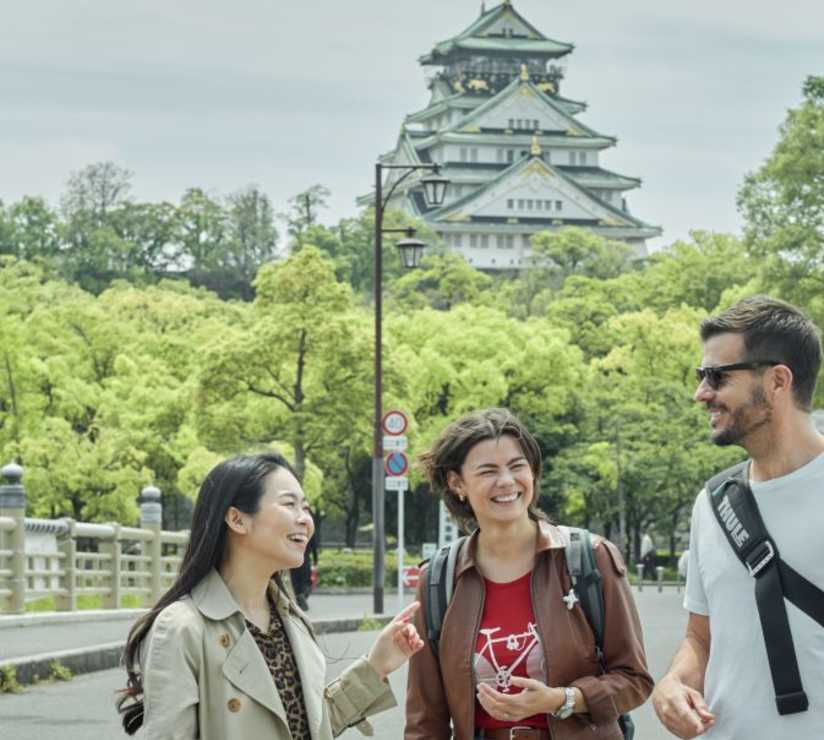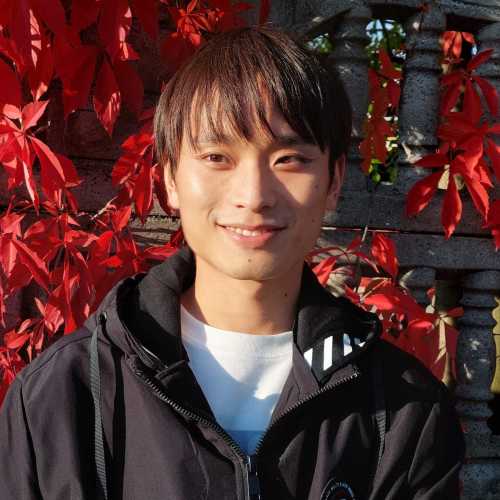Table Of Contents
- What Makes Osaka Different from Other Japanese Cities?
- The Heart of Osaka: Understanding Our Geography
- Osaka Castle: Beyond the Postcard Perfect Views
- Where to Find Osaka's Best Panoramic View?
- Universal Studios Japan: More Than Theme Park Thrills
- Osaka Aquarium: Where Marine Life Meets Urban Sophistication
- Street Food Culture: Beyond Tourist Traps
- Hidden Gems in Traditional Shopping Arcades
- Namba: Where Old Meets Aggressively Modern
- Day Trip Options: Exploring Beyond the Center
- What's Special About Osaka's Food Scene?
- Cherry Blossom Season: When Osaka Transforms
- Traditional Restaurants vs Modern Dining
- Tsutenkaku Tower: Osaka's Eiffel Tower with Personality
- Art Museums and Cultural Spaces
- Grand Front Osaka: Modern Shopping Reimagined
- Capsule Hotels: Experiencing Minimalist Accommodation
- Vibrant Nightlife: After Dark Adventures
- New World District: Retro Charm and Modern Edge
- Train Stations as Community Hubs
- Orange Street: Creative Quarter Discovery
- Tea Ceremony: Finding Tranquility in Urban Chaos
- Tallest Buildings: Architectural Ambitions
- Peaceful Escapes Within the Urban Landscape
- International Influences: Global Meets Local
- Family-Friendly Activities and Attractions
- Local Life: Understanding Daily Rhythms
- Planning Your Dream Trip to Osaka
- Making the Most of Your Osaka Home Base
- Conclusion: Why Osaka Remains Japan's Most Authentic Urban Experience
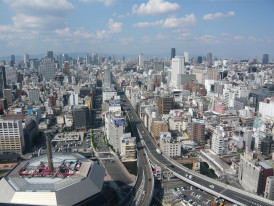
Early morning view of Osaka cityscape with traditional and modern buildings. Image by Robin Wolff from Pixabay
Living in Osaka my entire life, I've watched tourists rush through the same predictable checklist while missing what makes this city genuinely special. Sure, everyone knows about the obvious spots, but the real Osaka reveals itself in the spaces between the guidebook pages.
After years of showing friends around and working as a local host, I've realized that the must-see places in Osaka aren't just monuments and attractions; they're experiences that capture the soul of this bustling city. Let me share what matters here.
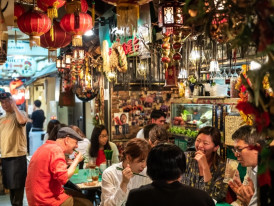
Locals laughing over drinks in a small Osaka izakaya.
What Makes Osaka Different from Other Japanese Cities?
People ask me this constantly, and honestly, it's our irreverent spirit. While Tokyo puts on airs and Kyoto clings to tradition, Osaka just gets on with being itself. We're loud, we're funny, and we take our food seriously enough to bankrupt ourselves over a perfect bowl of ramen.
The energy here is different. Walk through central Osaka at any hour, and you'll feel it, this restless creativity that's been brewing since merchants first gathered along these rivers centuries ago.
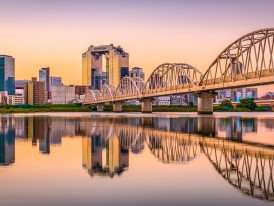
Aerial view showing Osaka's river systems and urban layout
The Heart of Osaka: Understanding Our Geography
Osaka sprawls along Osaka Bay in a way that makes perfect sense once you grasp the layout. The Yodo River system carved out natural districts that still define how we live and move through the city today.
Central Osaka pulses around major hubs like Osaka Station and Namba Station, but the real character lives in the neighborhoods radiating outward. Each area has its own personality, shaped by history, commerce, and the stubborn preferences of locals who refuse to be homogenized.
Looking for a private city experience in Osaka?
Explore the city with a local who plans a private day just for you; no groups, no scripts.
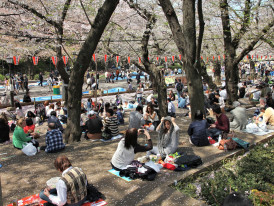
Families having hanami picnics in Osaka Castle Park
Osaka Castle: Beyond the Postcard Perfect Views
Everyone expects me to gush about Osaka Castle, and I get it, the reconstructed keep rising from Osaka Castle Park makes for stunning photos. But here's what the tour groups miss: the castle's real story isn't in the building itself.
The surrounding park tells a deeper tale of Osaka's rich history. During cherry blossom season, locals transform these grounds into impromptu communities, sharing food and stories under the pink canopy. This is where you see authentic Japanese culture in action, not performed for cameras.
The castle itself houses a surprisingly engaging museum, especially the sections covering Osaka's role as Japan's kitchen during the Edo period. The observation deck offers decent views, but honestly, you'll find better panoramas elsewhere in the city.
Walking through the park early morning, before the tour buses arrive, you'll encounter elderly locals practicing tai chi and joggers following paths worn smooth by generations of feet. This is when Osaka Castle park reveals its true purpose as a community anchor.
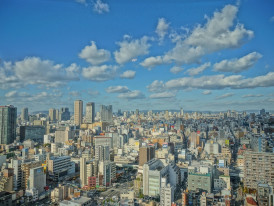
Panoramic view of Osaka from Umeda Sky Building observation deck Image by Dong Chan KIM from Pixabay
Where to Find Osaka's Best Panoramic View?
Skip the crowded castle observation deck and head to Umeda Sky Building instead. This architectural oddity, two towers connected by a floating observatory, offers the view that captures Osaka's sprawling complexity.
The observation deck here provides 360-degree views that encompass everything from Osaka Bay to the mountains beyond. What strikes me most is how the city spreads in all directions, defying neat boundaries or simple explanations.
The building itself represents Osaka's architectural ambitions, bold, unconventional, and slightly mad. Locals initially dismissed it as a folly, but we've grown fond of its alien presence on our skyline.
The underground restaurants serve decent food if you're hungry, but the real draw is timing your visit for sunset when the neon lights begin their nightly takeover of the city below.
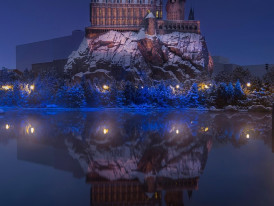
The Wizarding World of Harry Potter area at Universal Studios Japan Image by we-o_rd35omj_5fvnk7lro from Pixabay
Universal Studios Japan: More Than Theme Park Thrills
I'll be honest, Universal Studios Japan initially felt like cultural colonization to me. But watching my nieces experience the wizarding world for the first time changed my perspective on what belongs in modern Osaka.
The Harry Potter section is genuinely impressive, recreating Hogwarts with obsessive attention to detail that appeals to our national perfectionism. The butterbeer tastes better than it has any right to, and the castle tour incorporates enough Japanese efficiency to keep lines moving.
Jurassic Park ride with excited visitors getting splashed photo by
Jurassic Park delivers exactly what you'd expect: mechanical dinosaurs and carefully orchestrated scares. The Japanese operators somehow make even the safety announcements entertaining, injecting personality into what could be sterile corporate entertainment.
What surprises visitors is how Universal Studios has integrated into Osaka's entertainment landscape rather than replacing it. Locals treat it as another neighborhood option, not a destination that requires special pilgrimage.
The surrounding area has developed its own ecosystem of restaurants and shops catering to theme park crowds, creating an interesting hybrid of international tourism and local commerce.
What if your day in Osaka was planned by someone who knows it — and you?
City Unscripted matches you with a local host who creates a private experience based on your interests, not a set route.

Ethereal jellyfish display with colorful lighting.Image by Florenz Villegas from Pixabay
Osaka Aquarium: Where Marine Life Meets Urban Sophistication
Osaka Aquarium consistently ranks among the world's best, and for once, the hype matches reality. The central tank, housing whale sharks alongside dozens of other species, creates an underwater world that rivals any nature documentary.
The design follows a spiral path descending through different ocean zones, each representing specific marine environments. What impresses me is the attention to ecosystem relationships rather than simply displaying impressive specimens.
The whale sharks draw the crowds, but I'm more fascinated by the jellyfish exhibits, floating sculptures that seem designed by alien artists. The interactive sections let kids engage with marine life in ways that feel educational rather than exploitative.
Located near Osaka Bay, the aquarium connects to the broader story of Osaka's relationship with water—rivers that shaped our history, bay that connects us to the world, and marine life that reminds us of our planet's interconnected systems.
The surrounding area includes a Ferris wheel and shopping complex that make a day trip feel complete without overwhelming the aquarium experience itself.

Golden kushikatsu displayed at a traditional standing bar.
Street Food Culture: Beyond Tourist Traps
Osaka's reputation as Japan's kitchen comes from our street food culture, but most visitors hit the wrong spots. Dotonbori's flashy stalls serve adequate takoyaki to Instagram-hungry tourists while the real action happens in less photogenic locations.
Head to Shinsekai for kushikatsu that locals actually eat. The rules are simple: double-dipping in communal sauce gets you banned, and arguing about the rule gets you banned faster. These aren't quaint traditions—they're practical solutions to shared dining that make sense once you understand them.
Street food stalls throughout central Osaka serve specialties that exist nowhere else. Imagawayaki filled with unexpected combinations, okonomiyaki topped with ingredients that would horrify purists from Hiroshima, and variations on familiar themes that reflect our city's creative irreverence.
The best vendors develop relationships with regular customers that span decades. They remember preferences, adjust recipes for individual tastes, and create a sense of community around shared meals that transcends simple commerce.
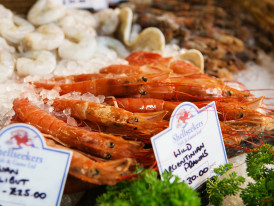
Fresh seafood display at Kuromon Market with vendors and customers
Hidden Gems in Traditional Shopping Arcades
Osaka's covered shopping arcades preserve a retail culture that predates department stores and online shopping. These aren't museums—they're functioning commercial ecosystems that adapt while maintaining their essential character.
Kuromon Ichiba Market combines tourist-friendly stalls with wholesale operations serving local restaurants. The early morning energy when chefs select ingredients offers glimpses into Osaka's food supply chain that most visitors never see.
Smaller shopping streets throughout the city specialize in everything from vintage kimonos to electronic components. The merchants often speak limited English but communicate through gesture, patience, and genuine enthusiasm for their products.
These shopping arcade spaces function as community centers where neighbors catch up on local gossip, children safely explore independence, and elderly residents maintain social connections that apartment living otherwise discourages.
Tip
We match you with the right host, not just any guide.Want to experience the real Osaka with someone who lives there?
A fully private experience, planned and led by a local host who tailors the day to you
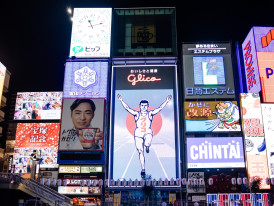
The famous Glico running man sign illuminated at night
Namba: Where Old Meets Aggressively Modern
Namba Station serves as Osaka's unofficial entertainment center, where traditional theaters share space with towering screens broadcasting advertisements that would make Times Square seem subtle.
The district's energy peaks after sunset when neon lights transform familiar streets into something approaching cyberpunk fantasy. Office workers decompress in tiny bars, tourists gawk at mechanical signs, and teenagers gather in spaces designed for exactly that purpose.
Dotonbori canal cuts through the center, providing a surprisingly peaceful counterpoint to the surrounding chaos. Late evening walks along the water offer perspective on how Osaka balances preservation with relentless modernization.
Namba Yasaka Shrine hides in plain sight, its lion head stage creating surreal juxtaposition with the surrounding commercial landscape. This is where Osaka's complexity reveals itself—ancient practices persisting within ultra-modern contexts.
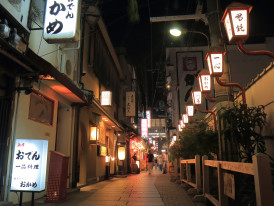
Quiet residential street in outer Osaka with traditional houses.
Day Trip Options: Exploring Beyond the Center
Osaka rewards visitors who venture beyond the obvious circuit. A day trip to peripheral neighborhoods reveals layers of local life that central tourist zones necessarily obscure.
Sumiyoshi Taisha shrine complex offers one of Japan's oldest architectural styles in a setting that feels genuinely sacred. The surrounding area maintains traditional rhythms that make central Osaka seem frantic by comparison.
The journey itself, whether by train or bicycle, provides insights into how ordinary Osaka residents navigate their city. Train stations serve as community hubs where people gather, shop, and socialize in patterns that reflect local priorities rather than tourist expectations.
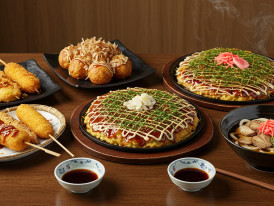
Various Osaka specialty dishes arranged on a table
What's Special About Osaka's Food Scene?
Osaka's food culture goes deeper than famous dishes—it's about an attitude that prioritizes flavor over presentation, value over pretense, and innovation over rigid tradition.
Local cuisine reflects our merchant heritage. Dishes developed to fuel hard-working people who couldn't afford to waste time or money on elaborate presentations. This practical approach created a food culture that values substance over style.
Japanese cuisine here incorporates influences from across Asia in ways that Tokyo's more conservative palate often rejects. Chinese techniques, Korean flavors, and Southeast Asian spices blend with traditional Japanese ingredients to create something distinctly Osakan.
The city's relationship with food extends beyond restaurants. Convenience stores stock regional specialties, department store food floors rival high-end restaurants, and street vendors serve quality that challenges sit-down establishments.
Ready to plan your perfect day in Osaka?
Start your experience
Office workers having hanami party under cherry blossoms
Cherry Blossom Season: When Osaka Transforms
Cherry blossom season in Osaka reveals the community spirit that the rest of the year keeps partially hidden. Parks transform into temporary neighborhoods where strangers share food, space, and celebratory mood.
The timing requires local knowledge, peak bloom lasts only days, and weather determines exactly when those days occur. Locals monitor cherry blossom forecasts with meteorological precision that outsiders find amusing until they experience the brief season themselves.
Hanami parties blend formal tradition with modern social needs. Colleagues strengthen workplace relationships, families create seasonal memories, and friends gather for celebrations that acknowledge life's temporary beauty.
The cherry blossoms frame Osaka's architecture in ways that soften urban edges and create photographic opportunities that feel earned rather than staged.

Modern fusion dish beautifully plated at a contemporary Osaka restaurant Image by Wow Phochiangrak from Pixabay
Traditional Restaurants vs Modern Dining
Osaka's dining scene spans centuries-old establishments serving unchanged recipes alongside experimental kitchens pushing culinary boundaries in directions that occasionally defy common sense.
Traditional restaurants often occupy buildings that predate modern zoning, creating intimate spaces where conversations naturally quiet and attention focuses on carefully prepared food. These establishments serve as cultural repositories where older Osaka persists.
Modern dining experiments with fusion concepts that would horrify purists but reflect Osaka's pragmatic approach to innovation. If it tastes good and attracts customers, tradition adjusts rather than vanishes entirely.
The division isn't absolute; traditional restaurants adapt to contemporary expectations while modern establishments reference classical techniques. This evolutionary approach keeps Osaka's food scene dynamic without abandoning its foundation.
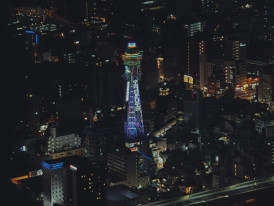
View from Tsutenkaku Tower observation deck showing Osaka spread below. Photo by Cheng on pexels
Tsutenkaku Tower: Osaka's Eiffel Tower with Personality
Tsutenkaku Tower functions as Osaka's answer to more famous towers worldwide, but with characteristically local touches that make direct comparisons pointless. The tower serves practical broadcasting functions while providing symbolic focus for the surrounding Shinsekai district.
The observation deck offers decent views, but the tower's real value lies in its role as a neighborhood anchor. Shinsekai retains nostalgic charm that newer developments often sanitize away, slightly shabby, definitely authentic, and resistant to gentrification pressures.
Climbing the tower provides historical perspective on Osaka's development patterns. The surrounding area represents layers of urban evolution—prewar architecture, postwar reconstruction, and contemporary additions that create a visual timeline of the city's resilience.

Traditional Japanese artwork displayed in a museum setting.
Art Museums and Cultural Spaces
Osaka's art scene operates somewhat in Tokyo's shadow, which creates opportunities for more experimental approaches and community engagement that larger cities often struggle to maintain.
Local museums focus on connecting art to daily life rather than preserving it behind academic barriers. Temporary exhibitions often incorporate Osaka themes—industrial heritage, food culture, merchant traditions that ground abstract concepts in familiar contexts.
The city's relationship with public art reflects our practical nature. Murals serve functional purposes, sculptures integrate with urban planning, and installations enhance rather than interrupt daily routines.
Smaller galleries throughout the city provide spaces for emerging artists to develop audiences and establish connections with local collectors who support experimental work that commercial galleries might avoid.
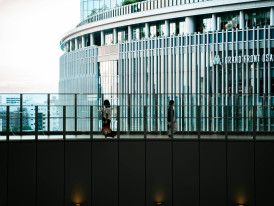
Modern architecture of Grand Front Osaka with people walking through Photo by Satoshi Hirayama on pexels
Grand Front Osaka: Modern Shopping Reimagined
Grand Front Osaka represents contemporary retail design that successfully integrates shopping, dining, and social spaces without feeling like a generic mall. The complex connects to Osaka Station in ways that make navigation intuitive rather than deliberately confusing.
The building's design acknowledges Osaka's climate, covered walkways, climate control that doesn't shock, and natural lighting that reduces the claustrophobic feeling that plagues many shopping centers.
International brands share space with local retailers in combinations that reflect Osaka's position as a global city that maintains distinct regional character. The restaurant floors serve as social spaces where shopping becomes secondary to community interaction.
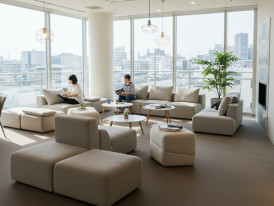
Common area in a modern capsule hotel with comfortable seating.
Capsule Hotels: Experiencing Minimalist Accommodation
Capsule hotels in Osaka range from basic sleeping pods to elaborate technological experiences that reimagine how temporary accommodation might function. The concept appeals to both budget travelers and locals who occasionally need urban refuge.
The better establishments provide everything necessary for comfortable stays while eliminating space waste that traditional hotels often include without purpose. Shared facilities encourage interaction among guests in ways that standard accommodations actively discourage.
Modern versions incorporate technology that personalizes the experience, like climate control, entertainment systems, and privacy adjustments, within spaces smaller than most closets. The efficiency appeals to Osaka's practical sensibilities.
The concept challenges assumptions about what accommodation requires versus what it merely traditionally includes. Most guests discover they need less space than they expected while appreciating the community aspects that larger accommodations often lack.
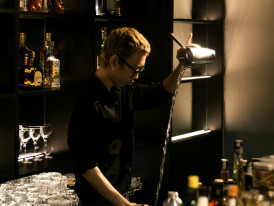
Bartender preparing cocktails in a small, atmospheric Osaka bar Photo by Nhat Anh Nguyen Chi on Unsplash
Vibrant Nightlife: After Dark Adventures
Osaka's nightlife reveals the city's social dynamics in ways that daylight hours necessarily obscure. The entertainment districts serve different demographics with remarkable precision, creating parallel worlds that occasionally intersect.
Tiny bars seating fewer than a dozen customers create intimate settings where conversations with strangers feel natural rather than forced. The mama-san culture provides social lubrication that helps shy customers engage with unfamiliar situations.
Karaoke establishments range from corporate boxes to neighborhood joints where regulars maintain ongoing song competitions that span years. The social dynamics reveal aspects of Japanese hierarchy and friendship that formal situations typically hide.
Late-night food options cater to shift workers, party refugees, and insomniacs who need sustenance at hours when most cities offer only vending machine snacks.

Vintage signage and retro storefronts in the New World district Photo by inyoung jung on Unsplash
New World District: Retro Charm and Modern Edge
The New World district preserves Osaka's early 20th-century optimism while adapting to contemporary realities in ways that create a unique urban atmosphere. The area's intentionally retro aesthetic masks genuine historical continuity.
Pachinko parlors, game centers, and specialty restaurants serve local customers rather than tourist curiosity, creating an authentic atmosphere that many "historic" districts struggle to maintain. The slightly seedy edges provide character that sanitized developments often lack.
The district's relationship with surrounding areas illustrates Osaka's approach to urban planning—organic development rather than master-planned design, with results that occasionally surprise even longtime residents.
Walking through New World at different hours reveals how the same spaces serve multiple communities—families during afternoon, salarymen during evening, night shift workers before dawn.

Underground shopping area beneath a major train station Photo by HANVIN CHEONG on Unsplash
Train Stations as Community Hubs
Osaka's train stations function as more than transportation nodes—they're commercial and social centers that shape neighborhood identity and daily rhythms in ways that urban planners elsewhere might study.
Osaka Station anchors the northern commercial district while serving as gateway for visitors arriving from other cities. The surrounding development creates vertical city that layers retail, dining, and office space with transportation infrastructure.
Kyoboshi Station and other local hubs demonstrate how transportation infrastructure can enhance rather than disrupt community life. The station-centered development patterns create walkable neighborhoods that support both commerce and social interaction.
Underground shopping networks connect stations while providing climate-controlled alternatives to street-level navigation. These spaces develop their own ecosystems of specialized retailers and service providers.
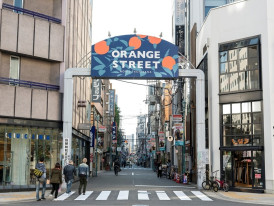
Trendy boutiques and cafes lining Orange Street
Orange Street: Creative Quarter Discovery
Orange Street represents Osaka's creative communities in microcosm—small galleries, independent boutiques, and cafes that cater to artistic sensibilities without pretentious attitudes that might intimidate casual visitors.
The street's development illustrates how creative districts emerge organically when rent stays affordable and zoning remains flexible. Artists, designers, and small entrepreneurs create a collaborative ecosystem that benefits from proximity and shared customer base.
The area's relationship with mainstream Osaka commerce demonstrates how alternative culture can coexist with, rather than oppose, conventional business practices. Many Orange Street establishments serve broader city populations while maintaining their creative focus.
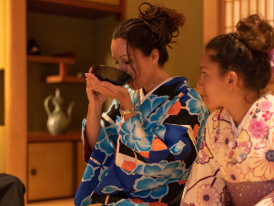
Tea master demonstrating proper technique to attentive students
Tea Ceremony: Finding Tranquility in Urban Chaos
Traditional tea ceremony in Osaka occurs in settings that range from formal schools preserving classical techniques to casual gatherings that adapt ancient practices to contemporary social needs.
The practice provides counterpoint to Osaka's relentless pace, creating temporal spaces where attention focuses on precise movements and carefully prepared beverages. The meditative aspects appeal to stressed urban residents seeking authentic relaxation.
Learning basic tea ceremony principles enhances appreciation for Japanese aesthetics, the attention to seasonal changes, the importance of appropriate tools, and the social dynamics that govern host-guest relationships.
Modern tea ceremony adaptations incorporate contemporary elements without abandoning fundamental principles, creating accessible entry points for people interested in traditional Japanese culture.
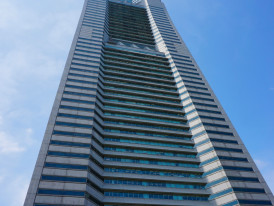
Looking up at a modern skyscraper from street level Photo by Syria Polidoro on Unsplash
Tallest Buildings: Architectural Ambitions
Osaka's skyline reflects the city's economic ambitions and architectural experimentation, with several of Japan's tallest buildings creating vertical landmarks that redefine urban perspectives.
These structures serve practical functions—office space, retail, residential—while making symbolic statements about Osaka's position in global urban hierarchy. The architectural styles range from conservative corporate to boldly experimental.
The observation decks in these buildings provide different angles on the city's geography, each revealing aspects of Osaka's layout that ground-level exploration necessarily misses. The views change dramatically with weather and season.
Building heights reflect economic cycles and regulatory changes, creating an architectural timeline that tracks Osaka's development through recent decades.
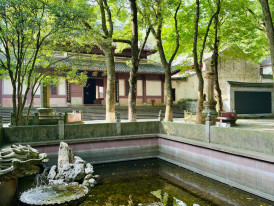
Quiet temple garden surrounded by city buildings Photo by Sean Wang on Unsplash
Peaceful Escapes Within the Urban Landscape
Despite its density and energy, Osaka provides numerous spaces for contemplation and restoration that don't require leaving the city limits. These refuges serve essential functions for urban residents who need periodic relief from stimulation overload.
Temple grounds throughout the city offer tranquil alternatives to commercial spaces, with gardens designed to provide psychological relief through natural elements and architectural harmony.
Neighborhood parks serve local communities with facilities that encourage social interaction—playgrounds, exercise equipment, gathering spaces—while providing green relief from concrete surroundings.
The Yodo River waterfront creates linear parkland that connects different districts while offering walking and cycling paths that feel removed from urban intensity.
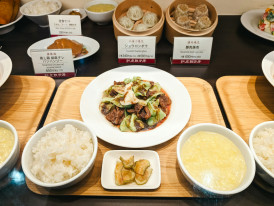
Fusion dish combining Japanese and international flavors. Photo by Markus Winkler on Unsplash
International Influences: Global Meets Local
Osaka's position as an international city creates fascinating cultural combinations where global influences merge with local traditions in ways that create something distinctly Osakan rather than generically international.
International dishes adapted to local tastes often taste better than their original versions, reflecting Osaka's pragmatic approach to cultural borrowing. If it works, we keep it; if it doesn't, we modify it until it does.
The city's international communities contribute to neighborhoods without overwhelming local character, creating cultural diversity that enhances rather than replaces existing social structures.
Business districts accommodate global corporations while maintaining distinctly Japanese operational styles, creating hybrid work cultures that foreign employees often find surprisingly effective.
Family-Friendly Activities and Attractions
Osaka succeeds as a family destination because it provides genuine entertainment for multiple age groups simultaneously, rather than relegating children's activities to designated zones that bore accompanying adults.
The combination of educational institutions, entertainment venues, and outdoor spaces creates opportunities for shared experiences that don't require constant compromise between different family members' interests.
Transportation systems accommodate families with surprising efficiency—elevator access, clear signage, and consideration for strollers and elderly family members that makes navigation manageable even for large groups.
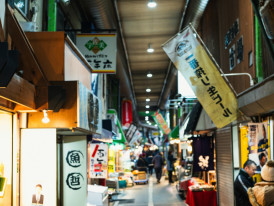
Local market vendors setting up their stalls in the early morning Photo by HYEWON HWANG on Unsplash
Local Life: Understanding Daily Rhythms
Osaka's daily rhythms reveal themselves to visitors who stay long enough to observe patterns beyond tourist-focused activities. The city's real personality emerges in the spaces between scheduled attractions.
Morning routines—commuter patterns, shop opening sequences, school children's movements—create urban choreography that repeats with variations that reflect seasonal changes and economic cycles.
Neighborhood commercial rhythms demonstrate how local economy functions—which businesses serve residents versus visitors, how pricing reflects local purchasing power, why certain services cluster in specific locations.
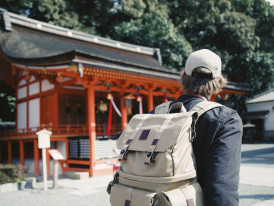
Visitor consulting a guidebook while standing in front of a temple Photo by bobby hendry on Unsplash
Planning Your Dream Trip to Osaka
Successful Osaka visits require understanding the city's complexity rather than following predetermined itineraries that might miss opportunities for authentic engagement with local culture. If you're pressed for time, consider following a well-planned one day Osaka itinerary that balances must-see attractions with authentic local experiences.
Timing affects everything, seasonal variations, weekly patterns, daily rhythms and visitors who align their schedules with local patterns generally have more satisfying experiences than those who fight against them.
The most rewarding approaches balance planned activities with spontaneous exploration, leaving time for discoveries that can't be scheduled but often provide the most memorable aspects of travel.
Making the Most of Your Osaka Home Base
Using Osaka as a base for exploring the broader Kansai region makes practical and economic sense, but requires understanding how regional transportation systems connect different destinations and cultural experiences.
Regional train map showing connections from Osaka to nearby cities.
Day trips to Kyoto, Nara, and Kobe each offer different perspectives on Japanese culture and history, while Osaka provides the urban amenities and dining options that make longer stays comfortable.
The entrance fee for most attractions remains reasonable by international standards, making it economically feasible to explore extensively rather than limiting yourself to a few expensive highlights.
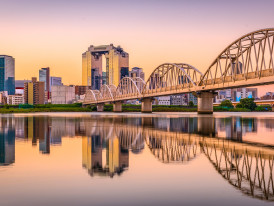
Sunset view over Osaka with the city's lights beginning to come on
Conclusion: Why Osaka Remains Japan's Most Authentic Urban Experience
After decades of living here and years of showing visitors around, I've come to understand that Osaka's appeal lies in its refusal to be anything other than itself. We don't perform tradition we live it, modify it, and occasionally abandon it when it no longer serves our purposes.
The city rewards visitors who approach it with curiosity rather than expectations, who remain open to experiences that don't fit predetermined categories of "Japanese culture" or "urban entertainment."
What makes Osaka Experiences special is the combination of old and new, traditional and innovative, formal and irreverent that creates urban complexity you can't find anywhere else. This is what locals recommend: not just places to visit, but ways of seeing that reveal why Osaka continues to surprise even those of us who call it home.
What if your day in Osaka was planned by someone who knows it — and you?
City Unscripted matches you with a local host who creates a private experience based on your interests, not a set route.
Want to experience the real Osaka with someone who lives there?
A fully private experience, planned and led by a local host who tailors the day to you
